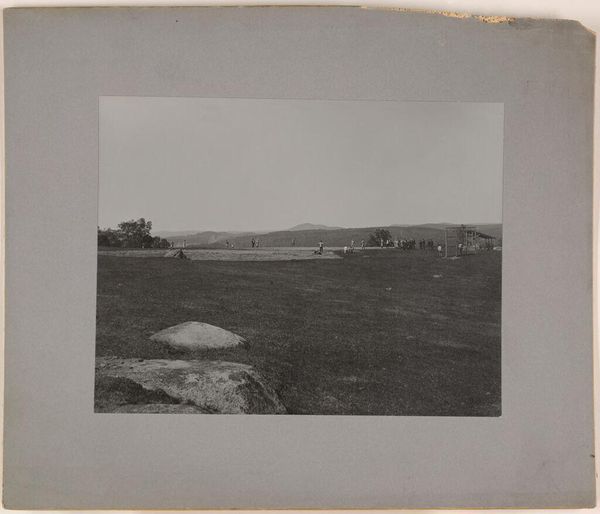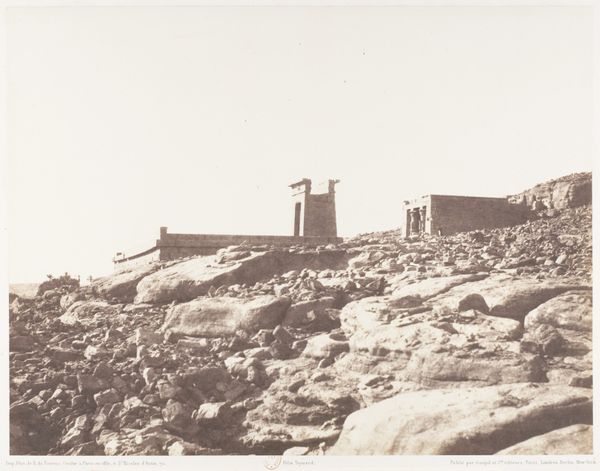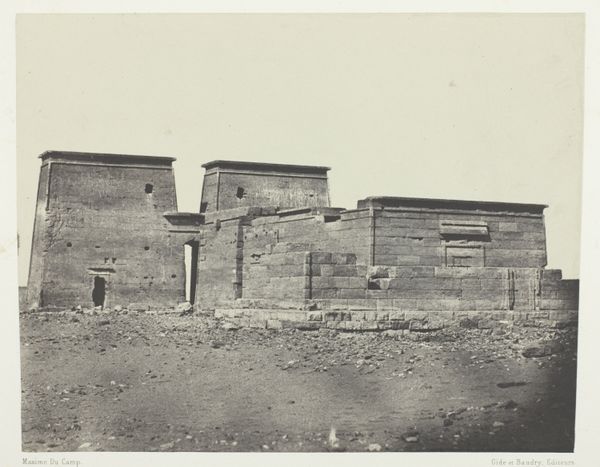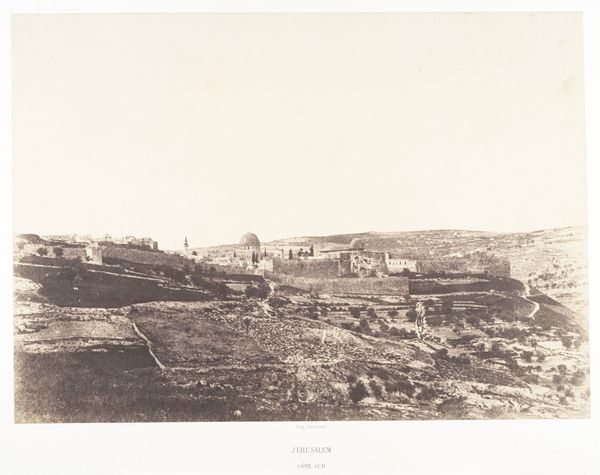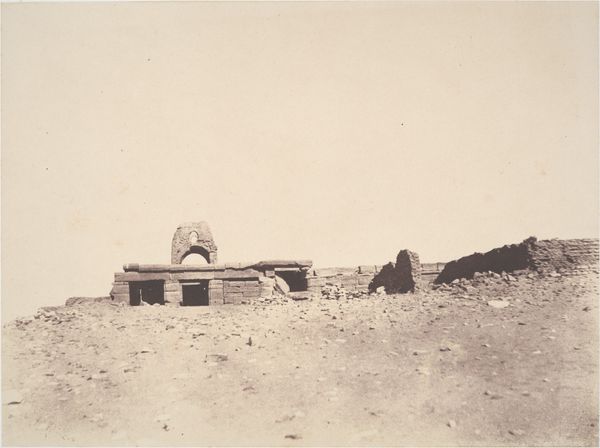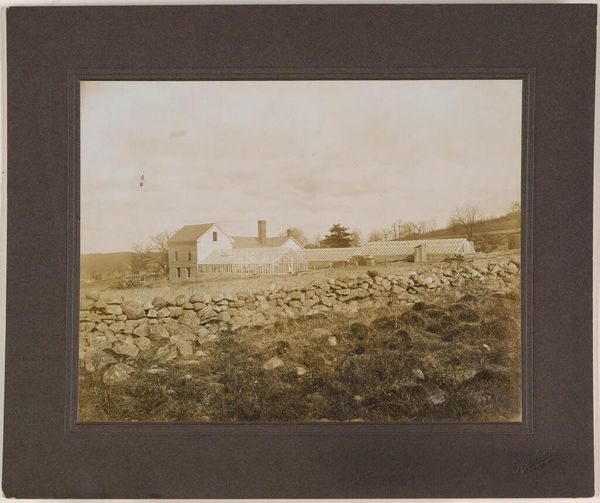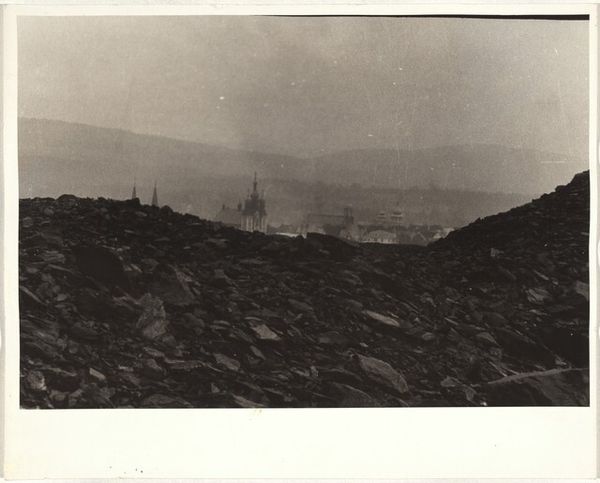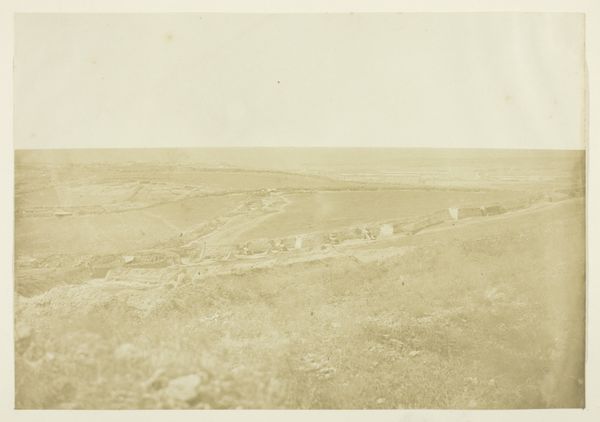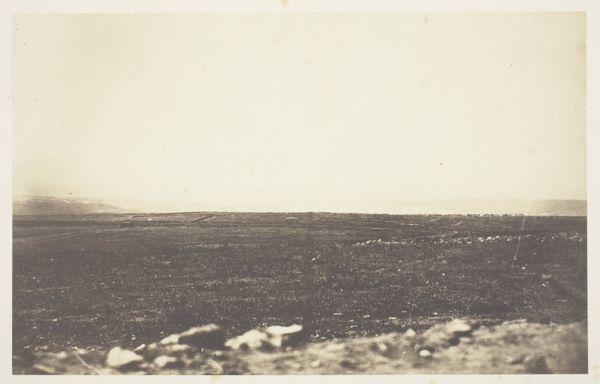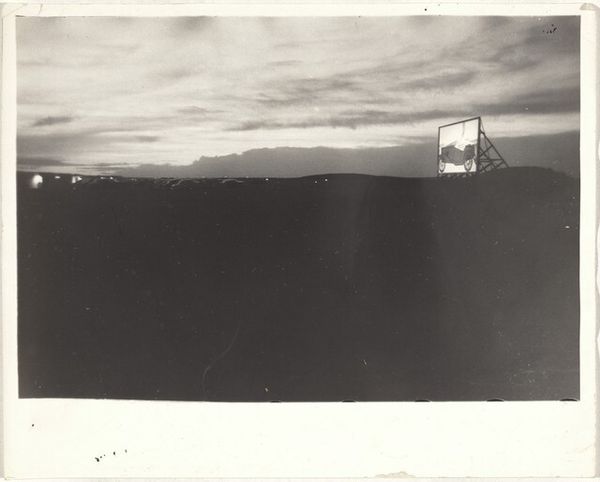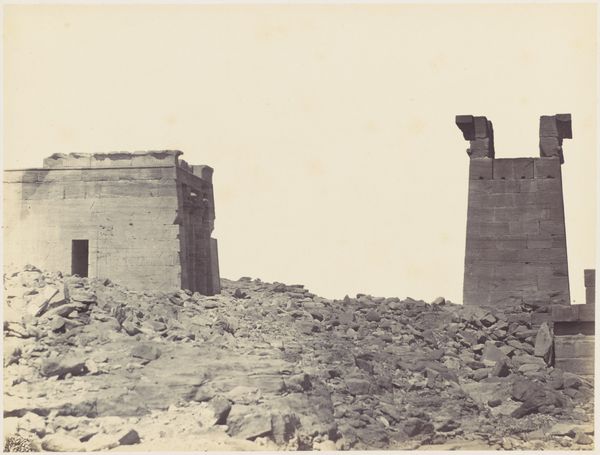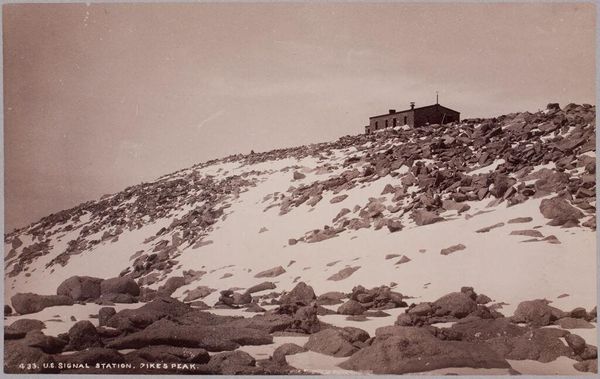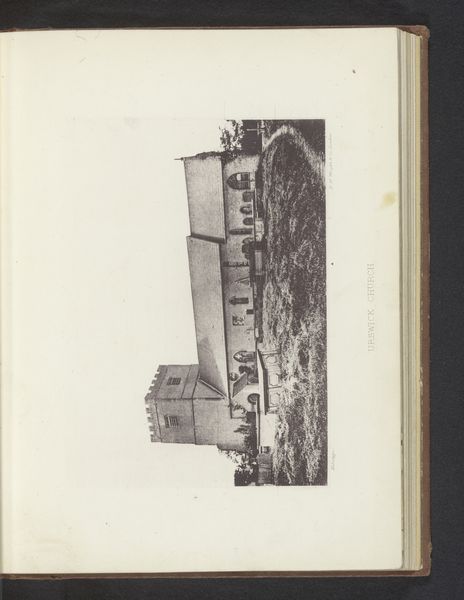
#
photo of handprinted image
#
light pencil work
#
photo restoration
#
ink paper printed
# print
#
wedding photography
#
colourisation
#
old engraving style
#
incomplete sketchy
#
personal sketchbook
#
pen-ink sketch
Dimensions: sheet: 20.3 x 25.3 cm (8 x 9 15/16 in.)
Copyright: National Gallery of Art: CC0 1.0
Curator: Let's consider Robert Frank's print, "Church--Wyoming," from 1956. What are your initial thoughts? Editor: Bleak, and perhaps intentionally so. The stark contrast, the remote location...it evokes a profound sense of isolation, wouldn't you agree? Curator: The composition certainly contributes to that feeling. Notice how the church is positioned on the horizon, almost dwarfed by the landscape. The deep blacks really dominate. Frank uses that high contrast, playing with the limited tonal range in a masterful way, flattening the pictorial space and drawing attention to the grainy texture of the print itself. Editor: Absolutely. And what does that framing say about the role of the church, and religion, in 1950s America, particularly in a state like Wyoming? Was it providing solace, or was it also somewhat marginal, perched on the edge of things? I see the church sharing space on a hill with what looks to be an outhouse or similarly plain storage shed... What a statement about land, class and religious practice. Curator: You make a good point. However, considering formal choices, I'd add that this positioning creates a visual tension, almost a sense of unease. There is nothing balanced or stable about Frank's composition. The tilted perspective disrupts any sense of harmony, and this is heightened by the heavy, dark foreground leading up the hill. It almost seems inhospitable. Editor: And I'd argue that inhospitality reflects broader social tensions. This image appears within Frank's larger project, The Americans, and he was actively documenting the disparities he observed across the nation. It speaks volumes about power dynamics, race, and the unfulfilled promises of the American Dream in the post-war years. This isn’t merely a picture of a church; it’s a statement. Curator: Agreed. It transcends a mere landscape. Editor: Precisely. Looking at it, I'm left contemplating what it really meant to build and sustain a community, and what structures held real value to these folks eking out a living on this hard land. What could be saved and what must be left behind. Curator: It's clear that through his technical skill and raw perspective, Frank challenges us to reconsider the familiar and probe deeper into the undercurrents of American life.
Comments
No comments
Be the first to comment and join the conversation on the ultimate creative platform.
